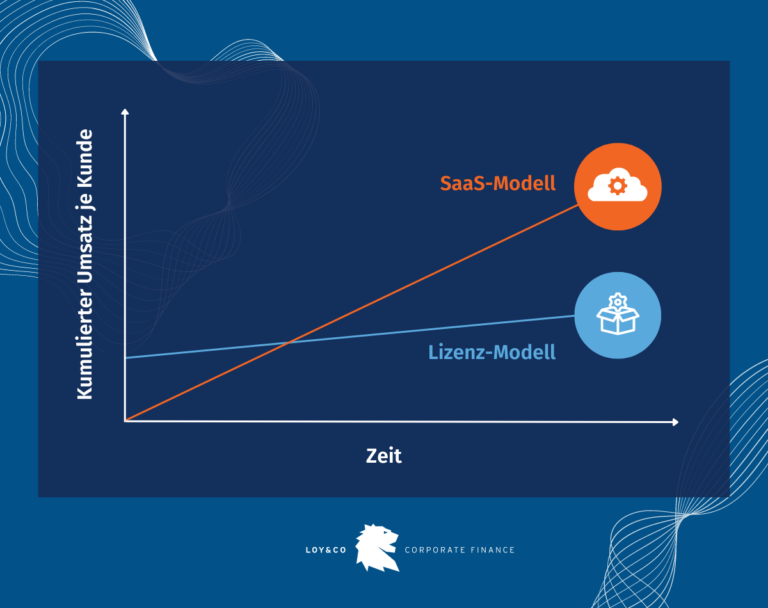What do I need to know about it?
The oldest form of software provision is license sales, in which the customer receives a physical or digital license, usually for a one-time payment, to use the software. This form of provision is also called “on-premise” because the software is installed in the customer’s IT environment.
In contrast, there is the so-called “Software-as-a-Service” (“SaaS”) model, in which the software is rented for a specific period of time in a subscription model. Provision is cloud-based and is therefore made available via the software provider’s data centers, eliminating the need for local installation at the end customer’s location.
The SaaS model has become established among many providers in recent years due to various advantages over the licensing model:
- Low initial outlay: The initial software setup results in significantly lower operational and financial costs, which is particularly attractive for smaller companies.
- Maintenance: Maintenance, troubleshooting, and backup creation can be carried out continuously directly by the service provider.
- Scalability: Additional users and product features can be added more flexibly, thus adapting to customer growth.
SaaS models are more attractive to enterprise buyers than licensing models for several reasons:
- Recurring Revenue: SaaS companies generate recurring revenue through subscriptions or monthly usage fees. The predictable and stable revenue of a SaaS model is more attractive to investors, allowing for better planning and long-term growth prospects.
- Scalability: SaaS models are often easier to scale than licensing models. Once the software infrastructure is in place, SaaS companies can easily add more customers without requiring significant additional resource utilization.
- Customer Retention: SaaS models promote strong customer retention, as customers typically subscribe for longer periods of time to maintain continuous access to the software and services. Long-term customer relationships mean that SaaS companies are less dependent on new customer acquisition.
- Updates and customer support: SaaS companies are able to offer continuous software updates and customer support to improve customer satisfaction. This leads to better customer retention and helps maintain a competitive advantage.
In summary, SaaS models offer investors an attractive opportunity to benefit from recurring revenue, scalability, customer retention, and agile business models, which offer advantages over traditional licensing models.
How can I use this information to my advantage?
Due to the increased market attractiveness and buyer ratings, the share of recurring revenue represents a key value driver for companies in the software industry. Business owners considering a sale should consider the following sales preparations to optimally position their company:
- SaaS Conversion: Sellers of software companies with license pricing models should consider whether a conversion to SaaS models is feasible. Even if there is an initial loss of revenue and profitability, the conversion usually increases value, as higher and more stable revenues are generated from a single customer in the long term than with the license model. The monthly fees for SaaS models should be calculated so that the payback period is not too long.
- Increase SaaS revenue:If you offer a hybrid model, you should increasingly convert existing license customers to SaaS customers in preparation for a sale in order to maximize the SaaS share of total revenue.










